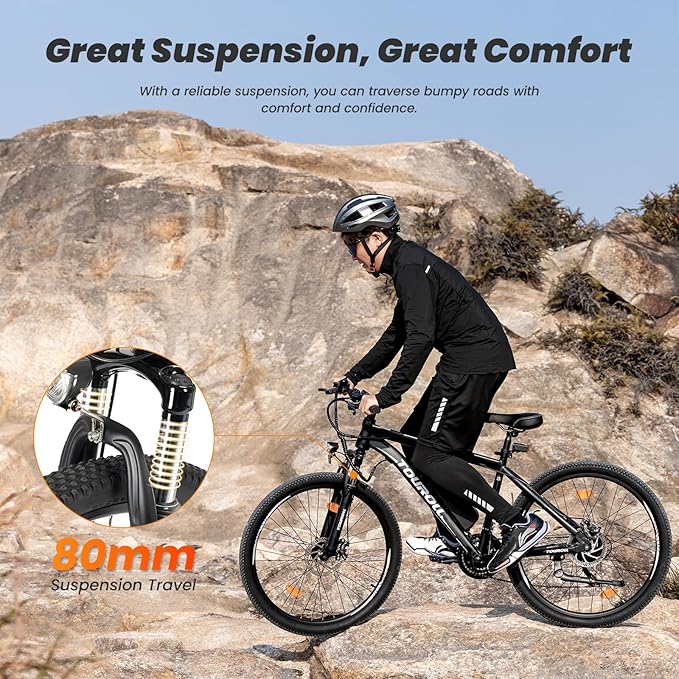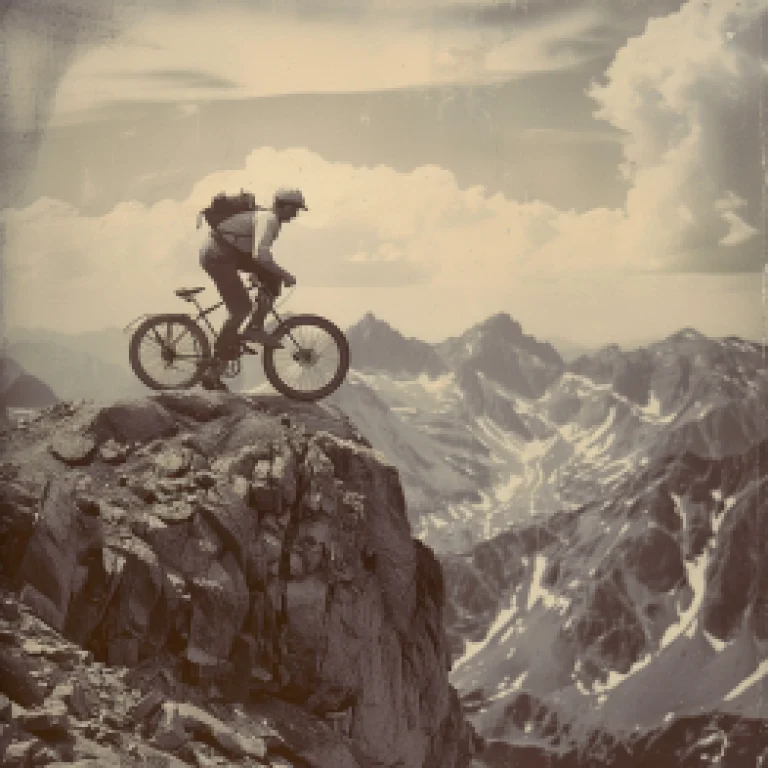Are you looking to enhance your mountain biking experience? Mastering mountain biking techniques can help you boost your skills and confidence on the trails. These techniques can improve your overall performance and make your rides more enjoyable. In this article, we will provide you with tips and guidance on various mountain biking techniques, from beginner-friendly to advanced, to help you take your riding to the next level.
Key Takeaways
- Developing mountain biking skills is crucial for enhancing your performance and enjoyment on the trails.
- Mastering techniques such as cornering, jumping, climbing, and braking can help you ride more efficiently and safely.
- Continuous practice and improvement can fine-tune your skills and build confidence on the trails.
Essential Mountain Biking Techniques for Beginners
If you’re new to mountain biking, learning essential techniques is crucial for building confidence and increasing your enjoyment on the trails. Here are some of the key mountain biking techniques for beginners to focus on:
Body Position
Proper body position is essential for maintaining balance and control on your bike. Keep your weight centered over your pedals, and bend your knees and elbows slightly to absorb bumps in the trail. Keep your head up and look ahead to anticipate any obstacles.
Braking
Learning how to brake effectively is critical for your safety and control on the trails. Use your index and middle fingers to apply pressure to the brake levers, and practice feathering the brakes to modulate your speed. Remember to use both brakes evenly to avoid skidding.
Basic Bike Handling Skills
Developing basic bike handling skills is essential for navigating technical terrain. Practice shifting your weight forward and back to maintain traction and balance. Learn how to ride over small obstacles and navigate tight turns.
Remember, mastering mountain biking techniques takes time and practice. Don’t be afraid to start on easier trails and gradually work your way up as your confidence and skills improve.
Advanced Mountain Biking Techniques: Take Your Skills to the Next Level
Are you an experienced mountain biker looking to push your limits and take your skills to the next level? Then it’s time to explore some advanced techniques that will help you conquer even the most challenging trails.
One of the most important skills for advanced mountain biking is cornering. To improve your cornering technique, focus on your body position and entry speed. Keep your weight low and centered over your bike, and enter the corner with enough speed to maintain momentum. As you approach the apex of the turn, lean your bike and your body into the corner, looking ahead to the exit. With practice, you’ll be able to take corners at higher speeds, with greater control and confidence.
Another exciting aspect of advanced mountain biking is jumping. Learning to jump your bike opens up a whole new world of possibilities on the trail, allowing you to clear obstacles and fly through the air with ease. To jump effectively, approach the jump with enough speed to clear it, and use your arms and legs to absorb the impact on the landing. Practice on small jumps first, gradually working your way up to bigger ones, and always wear appropriate safety gear.
Climbing can be one of the toughest challenges in mountain biking, but with the right technique, you can conquer even the steepest hills. Focus on maintaining a steady pedal stroke and keeping your weight forward on the bike. Shift your gears as needed to maintain a consistent cadence, and use your body to help you power up the hill. With practice, you’ll be able to climb with greater ease and efficiency.
Effective braking is crucial for safety and control on the trails. To improve your braking technique, focus on maintaining a good grip on your handlebars, and use your index and middle fingers to apply the brakes. Modulate your braking pressure to maintain control, and be prepared to adjust your technique for different trail conditions. With practice, you’ll be able to brake effectively in any situation.
Remember, mastering advanced mountain biking techniques takes time and practice. Don’t be afraid to challenge yourself and try new things, but always ride within your limits and wear appropriate safety gear. With dedication and perseverance, you’ll be able to take your mountain biking skills to the next level.
Mastering Cornering Techniques for Mountain Biking
Cornering is a fundamental skill that every mountain biker must master. By cornering smoothly and efficiently, you can maintain speed, save energy, and avoid crashes. Here are some cornering techniques to help you ride with confidence and control.
1. Look Ahead
The key to successful cornering is looking ahead. As you approach a turn, focus your eyes on the exit, not the obstacle. By doing this, it will help you to anticipate what’s coming and adjust your speed and line accordingly.
2. Brake Before the Turn
It’s important to brake before entering the turn, not during. Braking in the turn can cause your wheels to lose traction, which can lead to a crash. Instead, slow down before the turn and carry your momentum through the corner.
3. Weight the Outside Pedal
As you enter the turn, weight the outside pedal. This helps to lower your center of gravity, which in turn helps you to maintain traction and balance through the turn. Keep your body upright and don’t lean into the turn too much.
4. Lean Your Bike, Not Your Body
One common mistake is leaning your body instead of your bike. This can cause you to lose traction and control. Instead, lean your bike while keeping your body upright and facing ahead. This will help you maintain your speed and control while cornering.
5. Accelerate Through the Turn
As you exit the turn, accelerate smoothly and efficiently. This will help you to maintain your momentum and carry your speed through the turn. Remember to keep looking ahead and anticipate what’s coming next.
By practicing these cornering techniques, you can ride with confidence and control. With time and practice, you’ll be able to corner smoothly and efficiently, enabling you to tackle any trail with ease.
Jumping Techniques for Mountain Biking: Defying Gravity
Jumping on a mountain bike is one of the most thrilling experiences you can have on the trails. It’s the perfect combination of speed, airtime, and adrenaline. However, it can also be intimidating for beginners or those who have never attempted it before. Here are some jumping techniques for mountain biking that will help you defy gravity and enjoy the rush of soaring through the air.
1. Approach the Jump with Confidence
The key to a successful jump is to approach it with confidence. Look ahead and identify the takeoff point, then maintain a steady speed as you ride towards it. Keep your weight centered over the bike to maintain stability and control.
2. Stand Up and Prepare for Takeoff
As you reach the takeoff point, stand up on the pedals and shift your weight slightly back. This will help you lift the front wheel off the ground and prepare for takeoff. Keep your eyes focused on the landing area.
3. Explode Up and Forward
At the lip of the jump, explode up and forward. Use your legs to push the bike off the lip and into the air. As you leave the ground, keep your arms and legs relaxed and your eyes on the landing area. This will help you maintain control and adjust your trajectory if necessary.
4. Adjust Your Bike in the Air
While in the air, you can adjust your bike’s position to ensure a smooth landing. If you need to go further, tuck your bike in slightly. If you need to go higher, extend it. Use your hips and upper body to control your bike’s movement.
5. Prepare for Landing
As you approach the landing area, prepare yourself for impact. Keep your arms and legs relaxed and your weight centered over the bike. This will help you absorb the shock and maintain control of your bike.
6. Land Smoothly
When you touch down, aim to land both wheels at the same time. Bend your knees to absorb the impact and ensure a smooth landing. As soon as you land, look ahead and prepare for the next section of the trail.
With these jumping techniques for mountain biking, you can start defying gravity and experiencing the thrill of catching air. Remember to approach jumps with confidence, explode up and forward, adjust your bike in the air, prepare for landing, and land smoothly. With practice and determination, you’ll soon be soaring through the air like a pro!
Climbing Techniques for Mountain Biking: Conquering Uphills
If you want to become a skilled mountain biker, it’s essential to master climbing techniques. Uphill riding can be challenging, but with the right techniques, you can climb with confidence and ease. Here are some tips to help you conquer those hills:
1. Gear Selection
Selecting the right gear for climbing is crucial. You want a gear that lets you climb comfortably without being too hard on your legs. Shift to a lower gear to maintain steady cadence and pedal smoothly up the hill.
2. Body Position
Your body position also plays a vital role in climbing. Keep your upper body relaxed and centered, with your elbows slightly bent. Lean forward slightly to shift your weight to the front wheel and maintain traction.
3. Pedal Stroke Technique
It’s essential to use the correct pedal stroke when climbing. Focus on pushing the pedals down with your feet and pulling them up with your hamstrings. This technique will help you maintain a steady cadence and conserve your energy.
4. Trail Reading
Reading the trail ahead is critical when climbing. Look out for obstacles and rough terrain and plan your route accordingly. Finding the right line can make the difference between a successful climb and a difficult one.
By implementing these climbing techniques, you’ll be able to climb uphill with confidence and ease, allowing you to tackle more challenging trails. Remember, practice makes perfect, so keep practicing and refining your skills.
Mastering Braking Techniques for Mountain Biking: Control your Speed
Effective braking is crucial for safe and controlled mountain biking. Without proper technique, you risk losing control and endangering yourself and others on the trails. Mastering your braking skills can mean the difference between a heart-stopping moment and a smooth ride down the trail.
But how can you improve your braking technique?
Start by practising proper hand placement on the handlebars. Your index and middle fingers should firmly grip the brake levers, while your other fingers wrap around the handlebars for stability. This position allows you to apply more pressure to the brakes while maintaining control of your bike.
It’s also important to understand the concept of modulation, or the ability to control the amount of pressure applied to the brakes. This technique prevents skids, which can cause loss of control, and allows you to slow down gradually on steep descents or slippery surfaces.
When approaching a corner or obstacle, apply the brakes gradually and steadily. Avoid squeezing the brakes suddenly, as this can cause your bike to skid or lose traction. Instead, anticipate the turn or obstacle and brake in advance to maintain a steady speed.
But what should you do when faced with a sudden obstacle?
In this situation, you need to practise emergency braking. Shift your weight towards the back of the bike and apply both brakes at once, with equal pressure on both levers. This technique will quickly bring your bike to a stop, allowing you to avoid any potential hazards or collisions.
| Trail Conditions | Braking Techniques |
|---|---|
| Dry and hardpacked | Use a combination of front and rear brakes |
| Wet and muddy | Use more rear brake to avoid front wheel skids |
| Sandy or loose gravel | Apply the brakes gradually and maintain a controlled speed |
By mastering your braking techniques, you’ll have better control of your bike and be able to ride with greater confidence. Remember to practise regularly and pay attention to your body position and trail conditions. With time and dedication, you’ll become a more skilled and confident mountain biker.
Fine-tuning Your Mountain Biking Skills: Practice and Progress
As with any skill, mastering mountain biking techniques requires consistent practice and a commitment to continual improvement. By focusing on developing your mountain biking skills, you can become a more confident and capable rider, able to tackle more challenging and technical trails.
One important aspect of improving your mountain biking skills is to work on your balance. This includes developing core strength and stability, as well as fine-tuning your bike handling abilities. Regular practice of balance exercises and drills, both on and off the bike, can help you become a steadier and more controlled rider.
| Balance Exercise | Description |
|---|---|
| One-legged standing | Stand on one leg for 30 seconds to 1 minute, then switch legs and repeat. Increase difficulty by closing your eyes or standing on an unstable surface. |
| Bunny hops | Practice hopping your front and back wheel off the ground simultaneously, increasing height and distance over time. |
| Trackstand | Practice balancing in place on your bike with your feet clipped in. Try to maintain a still position for as long as possible. |
In addition to balance, it’s also important to work on your bike handling skills. This includes practicing basic techniques such as braking, shifting, and cornering, as well as more advanced moves like jumping and drop-offs. By honing your bike handling abilities, you can ride more confidently and smoothly on the trails.
- Practice braking in different situations, including on steep descents and loose terrain.
- Experiment with different gear combinations to find what works best for you on climbs and descents.
- Work on your cornering technique, focusing on weight distribution and body position.
- Practice jumping, starting with small features and working your way up to bigger ones over time.
Finally, one often overlooked aspect of mountain biking skills is the ability to read and react to the trail ahead. This means paying attention to changes in terrain, anticipating obstacles and hazards, and adjusting your riding accordingly. By developing your trail-reading skills, you can ride more safely and confidently, and take on more challenging terrain.
Remember, developing your mountain biking skills is an ongoing process, and there’s always room for improvement. By committing to regular practice and focusing on fine-tuning your abilities, you can unleash your full potential as a mountain biker.
Building Confidence on the Trails: Overcoming Mental Barriers
Mountain biking requires not only physical strength and technical skills but also mental fortitude. Building confidence on the trails can be a challenging yet rewarding journey. Here are some strategies to help you overcome mental barriers and unleash your full potential as a mountain biker.
Visualize Success
Visualization is a powerful tool to help you conquer fear and self-doubt. Before tackling a challenging section of trail, take a few moments to imagine yourself successfully riding through it. Visualize every detail, from your body position to the terrain. This technique will help you build confidence and prepare yourself mentally for the challenge ahead.
Positive Self-Talk
The way you talk to yourself can have a significant impact on your confidence. Negative self-talk can hold you back and undermine your ability to perform at your best. Instead, use positive self-talk to build yourself up and reinforce your strengths. Repeat affirmations such as “I can do this” or “I am strong and capable” to yourself, and watch your confidence soar.
Embrace Challenges
Challenges are an inevitable part of mountain biking. Instead of avoiding them, embrace them as an opportunity to learn and grow. Every time you overcome a challenge, you will become more confident and better equipped to tackle the next one. Remember, even the most skilled riders were once beginners.
Practice, Practice, Practice
Practice is essential to building confidence and improving your mountain biking skills. Make time for regular rides and skills sessions, and don’t be afraid to repeat challenging sections of trail until you feel comfortable. The more you practice, the more confident you will become.
By applying these strategies, you can overcome mental barriers and build the confidence you need to tackle any trail. Remember, building confidence is a journey, and it takes time and commitment. But with determination and perseverance, you can unleash your full potential as a mountain biker.
Conclusion: Unleash Your Full Potential as a Mountain Biker
Congratulations! You’ve reached the end of our guide to mastering mountain biking techniques and skills. You’ve learned the essential techniques for beginners, advanced techniques to take your skills to the next level, and specific skills for cornering, jumping, climbing and braking. We hope this guide has provided you with valuable insights and tips to enhance your mountain biking experience.
But don’t stop here! Remember, the key to truly mastering mountain biking techniques and skills is practice and continuous improvement. Apply what you’ve learned and keep pushing yourself to grow and improve as a rider. Fine-tune your balance, bike handling, and trail reading skills, and most importantly, build your mental fortitude and confidence on the trails.
By constantly challenging yourself and setting new goals, you can unleash your full potential as a mountain biker. So go out there, hit the trails, and ride with confidence and joy!
Thank you for reading, and we wish you all the best on your mountain biking journey.
FAQ
Q: What are the benefits of mastering mountain biking techniques?
A: Mastering mountain biking techniques can boost your skills and confidence on the trails. It allows you to ride more efficiently, navigate obstacles with ease, and ultimately have more fun while riding.
Q: What are some essential mountain biking techniques for beginners?
A: Essential mountain biking techniques for beginners include proper body position on the bike, effective braking techniques, and basic bike handling skills.
Q: What advanced mountain biking techniques can I learn to take my skills to the next level?
A: Advanced mountain biking techniques include mastering cornering, jumping, climbing, and braking techniques. These skills can help you ride more aggressively and confidently.
Q: How can I improve my cornering techniques for mountain biking?
A: To improve your cornering techniques, focus on body position, weight distribution, and looking through the turn. Practice on various types of corners to gain confidence and control.
Q: What are some jumping techniques for mountain biking?
A: Jumping techniques for mountain biking include approaches, body movements, and proper landing techniques. Learning these skills will allow you to gain air and safely land jumps.
Q: How can I improve my climbing techniques for mountain biking?
A: To improve your climbing techniques, focus on gear selection, body position, and pedal stroke technique. Learning to conserve energy and maintain traction will help you conquer uphill climbs.
Q: What are some braking techniques for mountain biking?
A: Effective braking techniques involve proper hand placement, modulation, and understanding how to brake in different trail conditions. Mastering these techniques will give you better control over your speed.
Q: How can I fine-tune my mountain biking skills?
A: Practice and continuous improvement are key to fine-tuning your mountain biking skills. Focus on balance, bike handling, and trail reading to become a more proficient rider.
Q: How can I build confidence on the trails while mountain biking?
A: Building confidence on the trails involves visualization techniques, positive self-talk, and overcoming fear and challenges. By gradually pushing your limits and celebrating small victories, you can become a more confident mountain biker.






